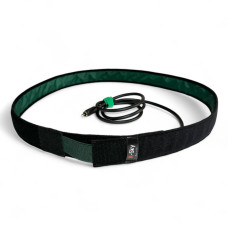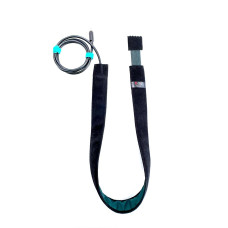Dew Heaters for eyepieces and telescopes

R-Sky Astro Instruments produces anti-dew heating elements of best quality for astronomical optics. We offer heating systems for virtually all models of eyepieces and telescopes. If you haven’t found something, please let us know and we’ll try to help.
Dew Heater strip for 1.25" eyepieces
Enjoy clear night skies with our Dew Heater Strip for 1.25” eyepieces—no more fogging!..Price: $33.00
Dew Heater strip for 2" eyepieces
Prevent fogging and freezing with our Dew Heater Strip for 2” eyepieces...Price: $35.00
Dew Heater strip Extra
Premium Dew Heater Strip Extra: Effective fog protection for 2-inch eyepieces and photographic lenses...Price: $51.00
Secondary Mirror Heater (S)
Reliable dew protection for Newtonian telescopes with our Secondary Mirror Heater—simple and effective...Price: $46.00
Secondary Mirror Heater (B)
Keep your secondary mirror fog-free with the R-Sky Heater, designed for optimal performance...Price: $49.00
Rib-Mounted Secondary Mirror Heater
Easily attaches to ribbed holders, gently heating your secondary telescope mirror..Price: $46.00
Dew Heater strip for 3" telescopes
Reliable dew protection for 3” telescopes: Hand-assembled quality and efficient heat distribution...Price: $39.00
Dew Heater Strip for 4" Telescopes
Premium Dew Heater Strip for 4” telescopes by R-Sky: Clear, uninterrupted stargazing...Price: $40.00
Dew Heater strip for 5'' telescope
Keep your 5” telescope optics clear and functional with the R-Sky Dew Heater Strip...Price: $42.00
Dew Heater strip for 6'' telescope
R-Sky Dew Heater Strip for 6” telescopes: Clear optics and hassle-free observation sessions...Price: $44.00
Dew Heater strip for 7-8" telescopes
Ensure clear optics with R-Sky’s Dew Heater Strip for 7-8” telescopes—no more dew or condensation...Price: $48.00
Extra Big for 7-8'' telescopes
Extra Big Dew Heater for 7-8” telescopes by R-Sky: Enhanced power for high-humidity conditions...Price: $65.00
Dew Heater for 9-10" telescopes
R-Sky Dew Heater Strip for 9-10” telescopes: Clear, uninterrupted stargazing sessions..Price: $50.00
Extra Big for 9-10'' telescopes
No more dew on 9-10” telescopes with R-Sky’s superior Extra Big Dew Heater...Price: $70.00
Dew Heater strip for 11" telescopes
Optimize your stargazing with R-Sky’s Dew Heater Strip for 11” telescopes—effective and reliable...Price: $53.00
Extra Big for 11'' telescopes
Advanced dew protection for 11” telescopes: R-Sky’s high-power Extra Big Dew Heater...Price: $75.00
Dew Heater strip for 12" telescopes
Keep 12” telescope optics clear with R-Sky’s premium Dew Heater Strip—no more dew!..Price: $60.00
Extra Big for 12'' telescopes
Extra Big Dew Heater for 12” telescopes by R-Sky: Superior power for high-humidity conditions...Price: $80.00
Dew Heater for 14-16" telescopes
Experience clear and uninterrupted stargazing with R-Sky’s Dew Heater Strip for 14-16” telescopes...Price: $68.00
Extra Big for 14-16'' telescopes
No more condensation on 14-16” telescopes with R-Sky’s advanced Extra Big Dew Heater...Price: $99.00
Dew Heater for Optical Finder
Dual protection for your finder scope: R-Sky Dew Heater keeps lens and eyepiece clear...Price: $49.00
Telrad Dew Heater (2 in 1)
Optimal performance for Telrad finders: R-Sky’s Dew Heater and Shield provide dual functionality...Price: $39.90
Rigel Quik Finder Dew Heater
Keep your Rigel Quik Finder operational with R-Sky’s Dew Heater—effective dew and frost protection...Price: $39.90
Dew Heater for Red Dot Finder
Ultimate dew protection! R-Sky’s dew heater keeps your red dot finder clear and functional in any conditions..Price: $33.00
Dew Heater for ReflexSight
Dew-free ReflexSight! R-Sky’s (2 in 1) Heater & Shield keeps your finder clear for precise targeting...Price: $39.90
Eyeglass Heater Pouch
No more foggy glasses — warm them up with our heated eyeglass pouch..Price: $49.00
Heater for Blocking-Filter (Solar)
Ensure clear solar details in H-alpha with a heater for blocking filters, even in freezing temps..Price: $49.90
Hand control heater for Go-To telescope
Prevent slow screens with R-Sky’s Hand Control Heater for Go-To Telescope controllers...Price: $49.00
Heater for Green Laser Pointer
Ensure your laser pointer functions perfectly in the cold with R-Sky’s reliable Heater...Price: $22.00
Dual Channel Dew Controller
Simple and effective heating management: R-Sky’s Dual Channel Dew Controller for versatile use...$80.00 / Old Price: $90.00
R-Sky Automatic Dew Controller
Keep your optics free from dew with R-Sky’s precise Automatic Controller—no more manual adjustments...$159.00 / Old Price: $190.00
Telescope sensor for Automatic Controller
Telescope sensor for Automatic Controller..Price: $15.00
Adapter for Power supply
Adapter to connect controller to an external power supply 12V..Price: $12.90
Adapter: Alligator clips on Female Car Cigarette Lighter Socket
Adapter to connect controller to an external big power battery..Price: $12.90
Single-channel dew controller
Reliable and easy to use: R-Sky’s Single-Channel Controller for smooth, adjustable heating power...$55.00 / Old Price: $60.00































